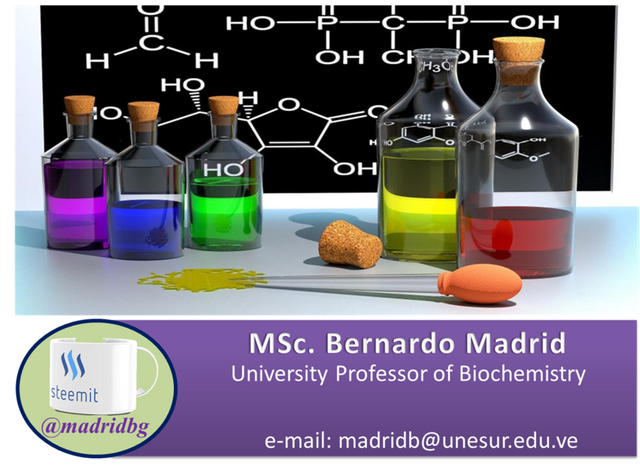
Authored by @madridbg, via Power Point 2010, using public domain images. Chokniti Khongchum
Greetings and welcome dear readers of this prestigious platform, the topic that concerns us in this opportunity is of a scientific nature under a flexible modality that allows us to understand the enzymatic functioning as a mechanism for the production of ethanol as a second generation fuel.
In this sense, we will rely on a set of investigations that are being carried out from the laboratories of Chemical Analysis of the University of Campinas in Brazil, where it was possible to detect a chemical molecule from the Amazonian fungus Trichoderma harzianum with characteristics and enzymatic properties that allow current on different sugars that constitute the plant biomass essential in obtaining renewable fuels in order to combat the scenarios of pollution and environmental degradation.
Undoubtedly the discovery gives a light at the end of the road, since under the studies carried out it allows to generate a greater use of plant residues produced in different agricultural processes, among which stand out the residues from sugar cane and corn, indispensable in the production of biofuels.

Fig. 2. Obtaining biofuels from organic matter. Author: Melodygar
The most interesting aspect of the process is that it initiates the elaboration of low-cost enzyme cocktails, which will allow obtaining the bio-product so necessary at an energetic level. We must remember that an enzyme is a substance that catalyzes different chemical reactions, generating interrelationships between substrates and the enzyme, which produces a decrease in the activation energy of the process and consequently a growth in the speed of the same.
So researchers have relied on this behavior to evaluate the fungal lineage using a set of scientific tools, associated with the analysis of genetic, protein and metabolic variations in fungi, leading them to consider their critical roles in other substrates such as plant cellulose.
As a remarkable result of this arduous work, the researchers have managed to highlight that fungi of the Trichoderma genus, exhibit great potential in the manufacture of active enzymes that attack carbohydrates, where they have been able to isolate compounds associated with the family glycoside hydrolases indispensable in the biomass of products already mentioned above.
In the opinion of Leal Motta, active researcher of the project:
"Among the properties found are the ability to degrade the membranes that protect the hemi-cellulose and different sugars present in sugar cane.”.

Fig. 3. Sugarcane waste. Author: Momolebo2020
So the effectiveness of the product is determined with the ability to prepare different enzyme cocktails that attack the lateral membrane of hemi-cellulose and consequently the second generation ethanol can be degraded and produced more easily.
In this sense, we will be attentive to the scientific advances of this research with important projections at an energetic and environmental level.
BIBLIOGRAPHY CONSULTED

[1] José Gustavo Ávila-Zárraga. (2009). Photochemical synthesis using sunlight. Chemical Education. Faculty of Chemistry. National Autonomous University of Mexico. Article: Online Access
[2] IBERO-AMERICAN AGENCY FOR THE DIFFUSION OF SCIENCE AND TECHNOLOGY. Article: Online Access
OF INTEREST

•

Grateful with the community @project.hope and with all the management team of the same one that they motivate us to continue working in a mutual and balanced growth.


It is always good to read and know about everything that is discovered and advances for the preservation of the environment and life itself.
thank you for your excellent contribution
Downvoting a post can decrease pending rewards and make it less visible. Common reasons:
Submit
Greetings friend Jose @joseph1956, it is always nice to see you pass by and leave your opinion on the subject, the environmental issue should be of interest to all since we are responsible for the great modifications that this has suffered. And certainly apply science to achieve mitigate these damages does not give a great opportunity to improve little by little the problems that afflict us.
Downvoting a post can decrease pending rewards and make it less visible. Common reasons:
Submit
Greetings @madridbg, how good it is to read the continuous advances that are being developed in favor of the search to reduce the great pollution generated in the exploitation of oil and even more if it is a method where a renewable resource such as ethanol is involved. I hope that these scientific advances will continue.
Downvoting a post can decrease pending rewards and make it less visible. Common reasons:
Submit
Greetings @sidalim88 it is renewable because it starts from sugar cane waste and other agricultural by-products and the most important thing is that it does not leave residues after the combustion process hence the importance of this type of research that implements the scientific component along with technological advances. Thanks for stopping by and leaving your opinion
Downvoting a post can decrease pending rewards and make it less visible. Common reasons:
Submit
@tipu curate
Downvoting a post can decrease pending rewards and make it less visible. Common reasons:
Submit
Upvoted 👌 (Mana: 2/5) Get profit votes with @tipU :)
Downvoting a post can decrease pending rewards and make it less visible. Common reasons:
Submit
Greetings friend @alokkumar121 thank you for your appreciation of my publications.
Downvoting a post can decrease pending rewards and make it less visible. Common reasons:
Submit